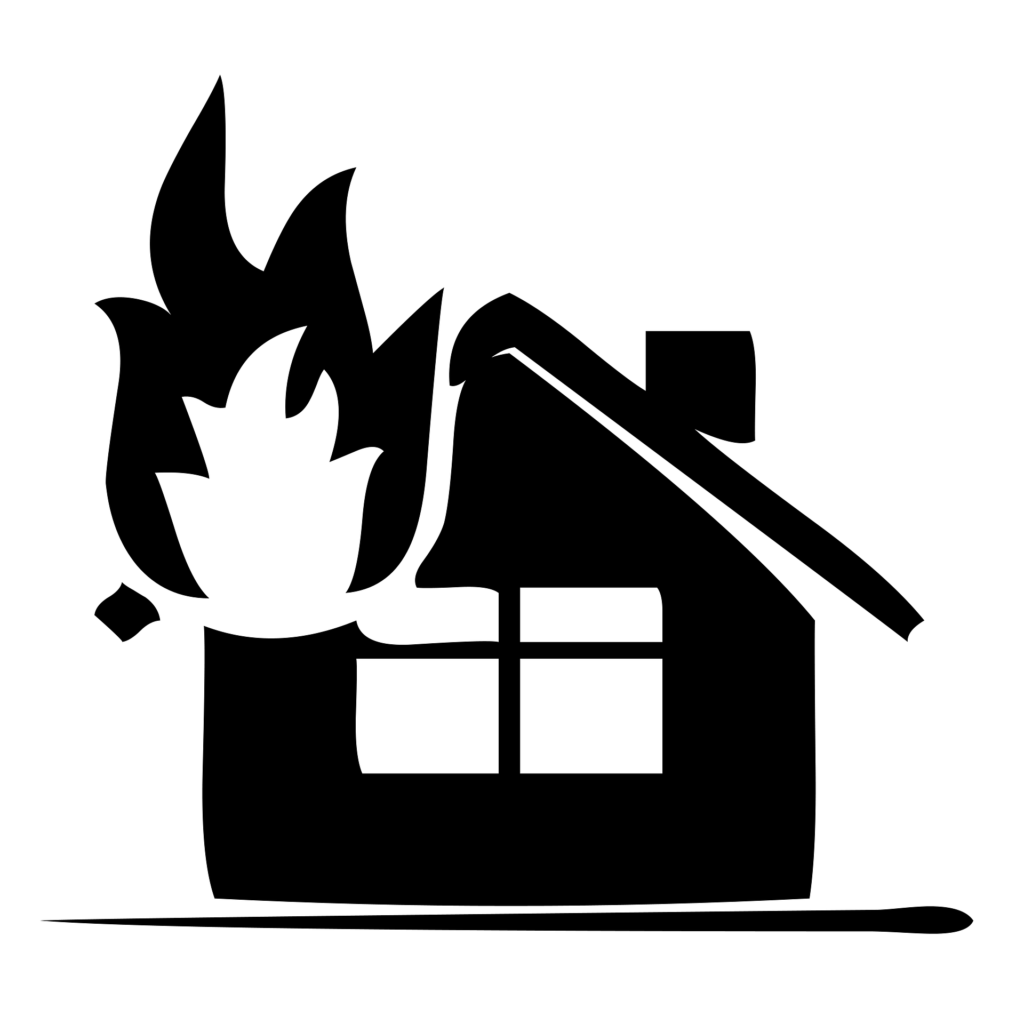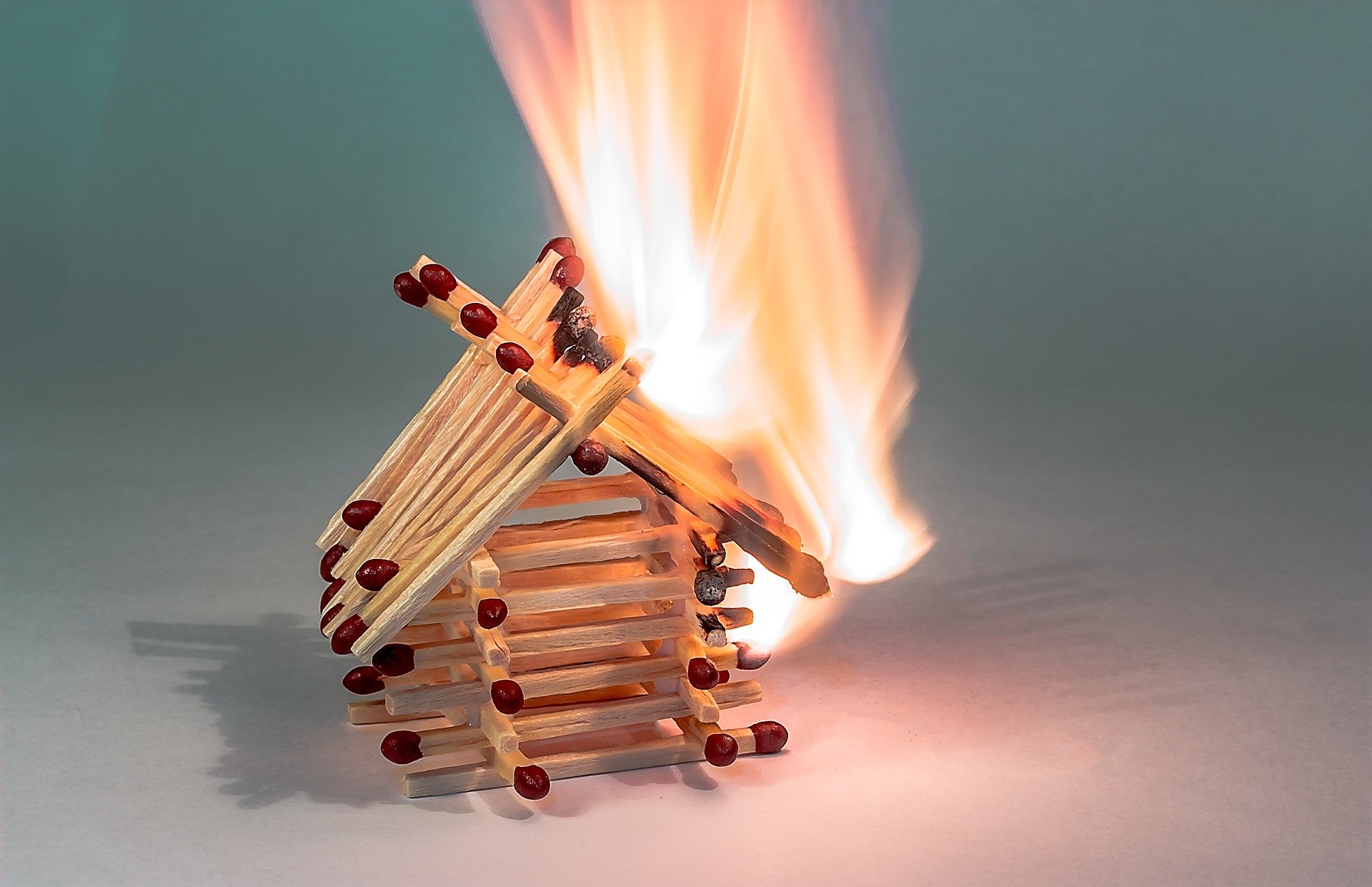A fire in your home is one of the scariest things you can experience. Did you know that more than 37,000 UK household fires are reported every year, and that more than 260 people lose their lives?
With the Grenfell Tower disaster still fresh in everyone’s mind, and wildfires raging in California and Australia threatening homes and livelihoods, fire safety should be top of everyone’s list.
So, what can you do about safeguarding your family, home and possessions and minimise the risk? We’ve put together some of the changes you can make to protect your home from a fire.
-
Use fire retardant materials
Let’s start with building materials; some are more vulnerable to fire than others. Using fire retardant alternatives and fireproofing your interiors are good first lines of defence against a potentially serious tragedy. Make the changes when you are refurbishing or redecorating your home.
When it comes to materials, concrete panels, stucco or brick for exterior walls, steel framing for windows and concrete or metal for roofing are all good choices. Fire retardant paint is also a good idea. For decking, concrete, tiles, stone or brick are better than wood.
Inside your home, choose fire resistant curtains and upholstery fabrics, making sure you understand the various British standards and certifications used for fireproofing fabrics. Additional flameproofing can also be administered to your existing home fabrics and upholstered furniture in situ.
-
Install smoke alarms
Smoke alarms provide an early warning in case of a fire inside your home. Traditional alarms beep when they detect smoke or fire, while smart detectors also send an alert to your phone. According to UK Fire Service Resources, there should be a smoke detector in every room in your house except bathrooms, for maximum protection. You also need one in the hallway between the living area and bedrooms, and one on each landing.
There are 4 types of smoke alarms suitable for different areas in the house. Smoke alarms should be located away from air vents, and batteries changed every 6 months. Crucially, you are highly advised to test your smoke alarms at least once a year to ensure they still work. You are four times more likely to die in a house fire without a functioning smoke alarm!
-
Get a fire extinguisher
Having a fire extinguisher handy can make the difference between a small kitchen mishap that was successfully contained, and the house literally burning down. There are different types of fire extinguisher, classified according to the kind of fire they’re designed to tackle. Make sure you are aware of what the differences are and how to use each one in an emergency situation. A typical home extinguisher should have an ABC rating:
Class A – combustibles such as wood, paper, cloth, rubber, household rubbish, most plastics
Class B – flammable liquids, solvents, oil, petrol, paints and lacquers
Class C – gases including methane, propane, hydrogen, acetylene and natural gas
Class D – combustible metals including magnesium and aluminium swarf
Class E – Electrical fires
Class F – chip pan fires, as an alternative to a fire blanket
-
Invest in fire doors in key areas
A fire in the home can spread rapidly, engulfing entire rooms in under 10 minutes. But the damage from smoke and fire can be drastically reduced by having fire doors in your home that are closed at night when fires are more common.
A fire door will hold back the smoke, heat and flames – typically for up to 30 or 60 minutes – protecting the escape route and giving you those crucial extra minutes to get out of the building safely.
Non-domestic buildings are subject to the Regulatory Reform (Fire Safety) Order 2005, of which fire doors are an important element. In fact, business owners found guilty of blocking a fire door, preventing it from closing properly or failing to have one in the first place, can face unlimited fines and 2 years in prison.
Domestic properties, on the other hand, typically only require the installation of fire doors if they have 3+ storeys or an integral garage with a connecting door. Which is not to say that you can’t fit as many as you would like in your home to protect your nearest and dearest.
-
Fit an anti-arson letterbox
Sad but true – arson now accounts for over 50% of all recorded fires in Britain. There are over 80,000 arson attacks committed every year, with an overall cost of more than £2.5 billion per year, hundreds of people injured and dozens of deaths.
The most vulnerable element of the house is the letterbox – direct, easy and unmonitored access to the interior of your home. Should you ever be a target for attack, for whatever reason and including for no discernible reason whatsoever, this is where you need to protect yourself.
Anti-arson letterboxes such as these ones contain an in-built extinguishing system to deal with any flammable liquids that may be poured through the letterbox. Fitted on the inside of the front door, they are made from fireproof sheet steal with a seal to maintain the fire’s integrity.
-
Create a fire stopping landscape
A fire originating from outside, such as a wildfire, is best thwarted by preventing it from reaching your house in the first place. You can use landscape gardening design to slow down or stop the spread of fire towards your home, by adhering to these tips:
- Use hard landscaping such as concrete, stone or gravel around the house
- Clear any dry vegetation from around the home, particularly in the summer
- Use fire resistant plants such as lavender and honeysuckle for soft landscaping, and spread them out, to slow down fire and stop it from spreading
- Keep outdoor plants well watered during the summer months. Lush green planting is less likely to burn.
The Future of Fire Safety: download the eBook
Is the fire protection industry adapting to the post-Grenfell reality fast enough? At FIREX International 2019, Europe's only dedicated fire safety event, some of the world's leading fire safety experts covered this theme. This eBook covers the key insights from those discussions on the developments shaping the profession, with topics including:
- Grenfell Inquiry must yield “bedrock change” – and soon
- After Grenfell: Jonathan O’Neill OBE on how austerity and policy “on the hoof” are hampering progress
- Hackitt’s Golden Thread: Fire, facilities and building safety
- Fire safety community has to “get on board” with technological changes

